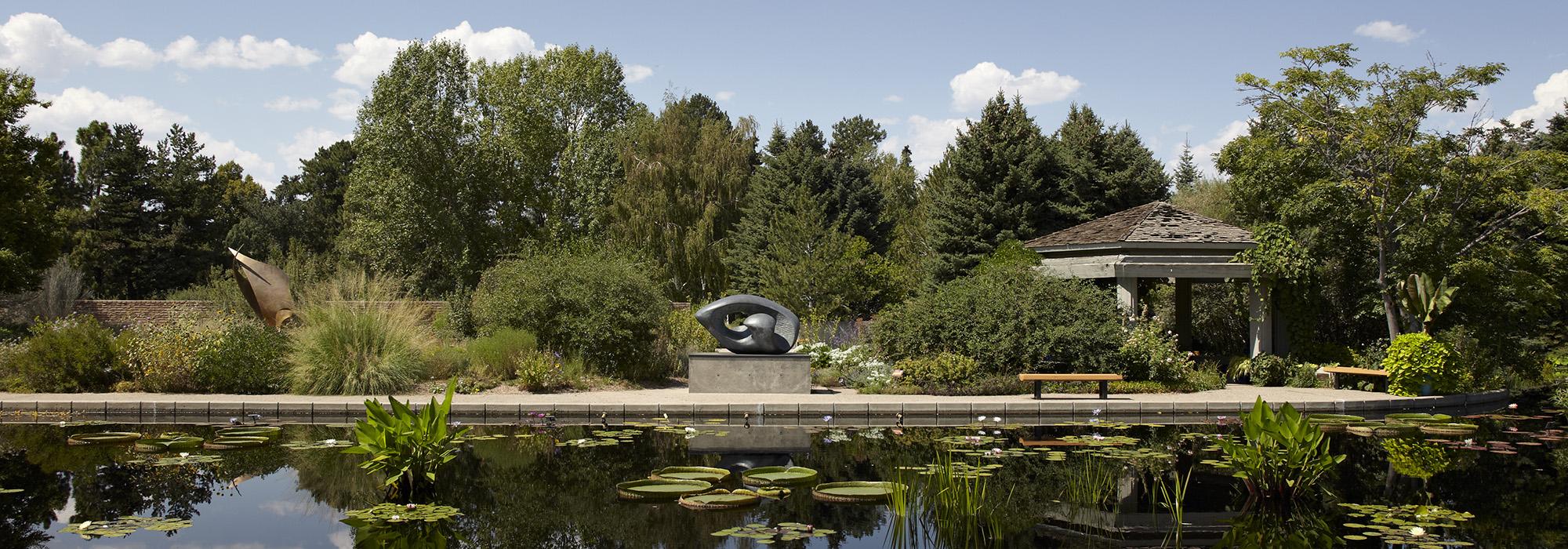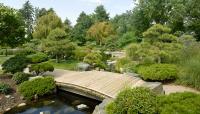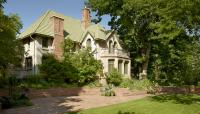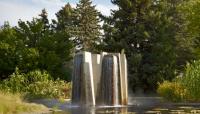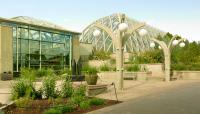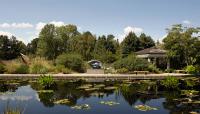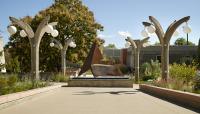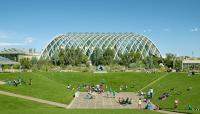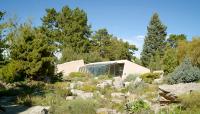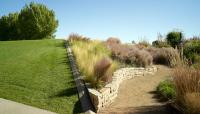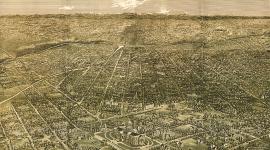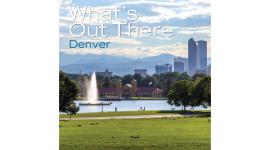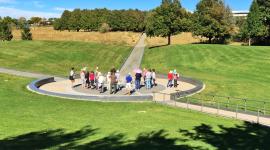Landscape Information
The Colorado Forestry and Horticulture Association formed the Denver Botanical Gardens in 1951, hiring S. R. DeBoer to draft a 15-year master plan. Originally located on 100 acres in City Park, by late 1958 the gardens were moved to a more protected, fenced property on York Street between 9th and 11th Streets on top of an old cemetery. Planting on the new site started in 1959, the same year the adjacent Waring York Street Mansion was donated, which today houses the Garden’s administrative headquarters. Garrett Eckbo, in collaboration with Eckbo, Dean, Austin and Williams, developed the master plan in 1969.
The Denver Botanic Gardens were one of the first to practice water conservation, biological pest management, and the cultivation of native plant species. The rectilinear 23-acre site is parsed into 43 unique gardens connected by wide straight paths. Narrower meandering paths wind through the distinct gardens, which include a Japanese Garden designed by Koichi Kawana with Kai Kawahara, a South African garden, rose and lilac gardens, and numerous spaces dedicated to diverse native ecologies and cultures of Colorado. There is also an orangery and a large lawn amphitheater formed by tilting planes of close-cropped grass. A signature feature of the gardens is the modernist Boettcher Memorial Tropical Conservancy designed by Denver architects Victor Hornbein and Ed White Jr. and opened in 1966. Its plexi-glass and arcing interlaced concrete dome houses tropical and subtropical plants. The Waring House and the Boettcher Conservancy were declared Denver Landmarks in 1973. The organization also has two larger facilities at Chatfield and Mount Goliath.



